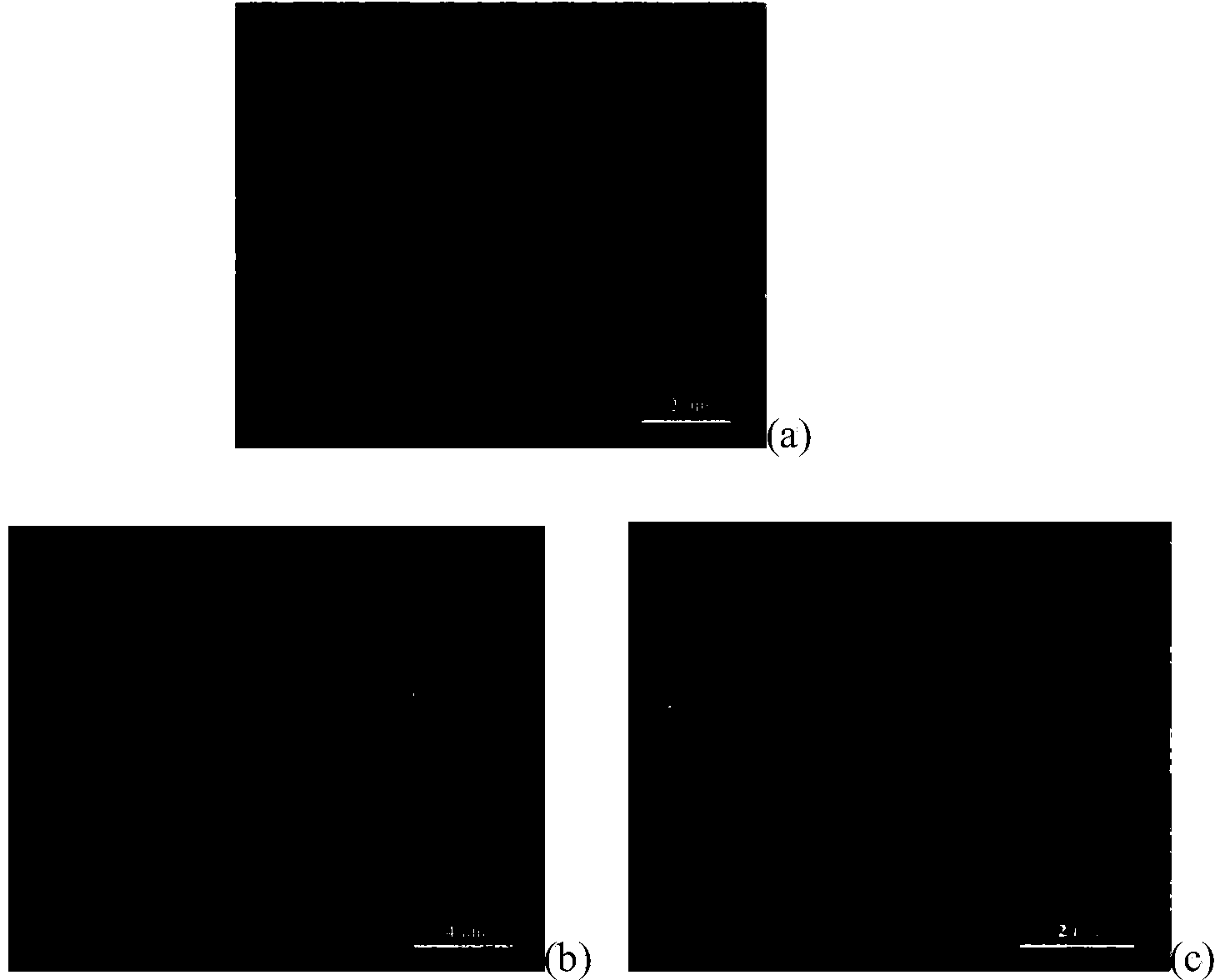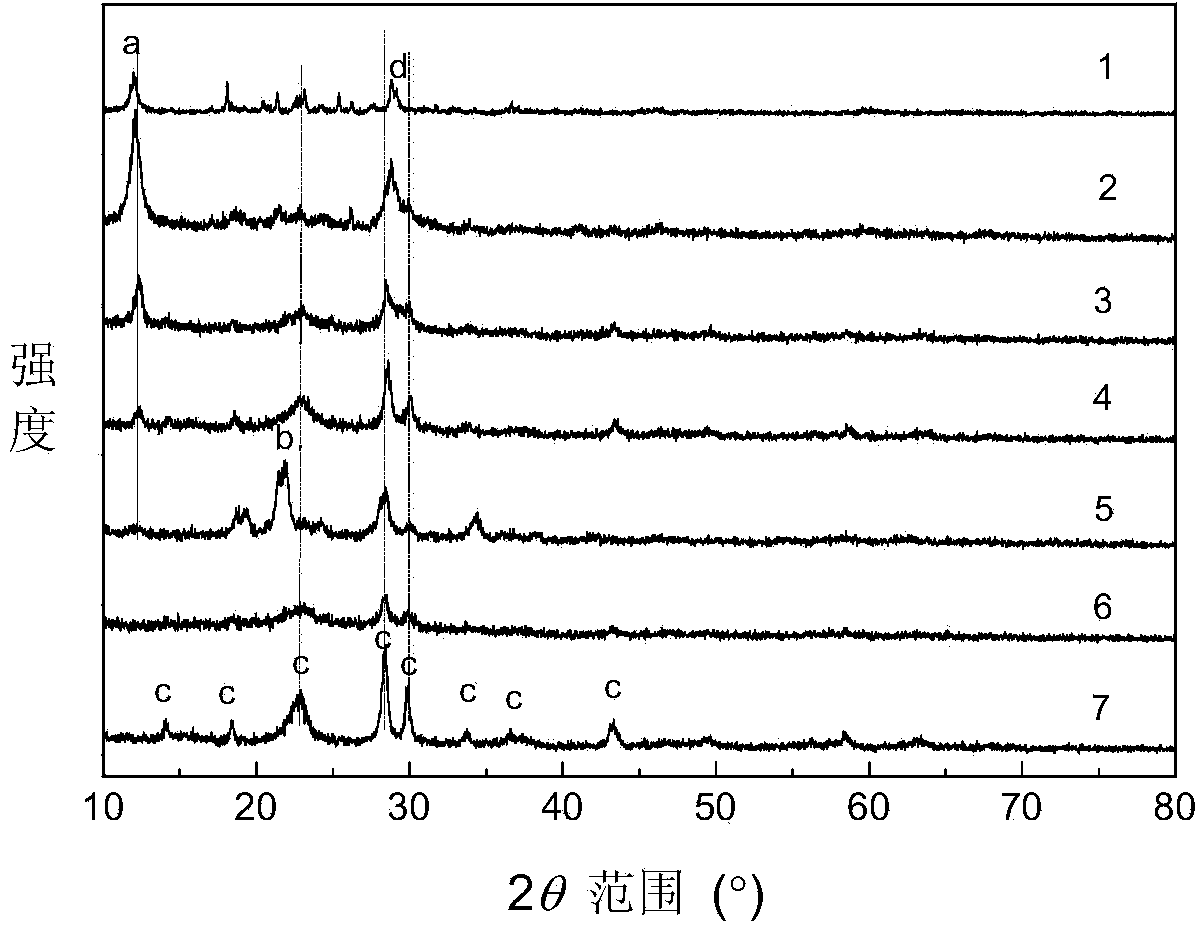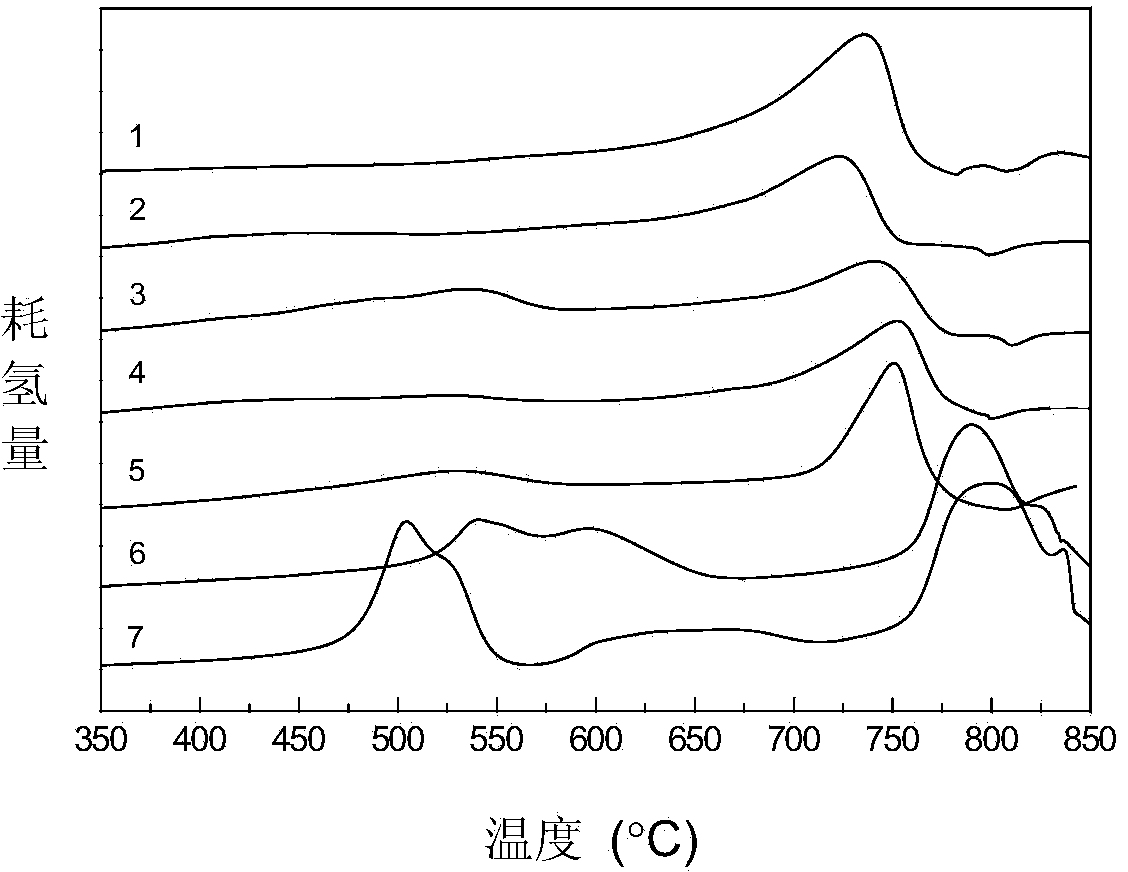Vanadium-phosphorus-oxide (VPO) catalyst and application in preparation of crylic acid (ester) by reacting acetic acid (ester) with formaldehyde
A methyl acrylate and catalyst technology, applied in the direction of carboxylate preparation, physical/chemical process catalyst, carboxylate preparation, etc., to achieve the effect of less by-products and high catalytic efficiency
- Summary
- Abstract
- Description
- Claims
- Application Information
AI Technical Summary
Problems solved by technology
Method used
Image
Examples
Embodiment 1
[0021] 4.8g of vanadium pentoxide and 72ml of benzyl alcohol were refluxed at 140°C for 6 hours, and 2.1g of PEG6000 was added to the reaction medium. After 1 hour, 6.45g of concentrated phosphoric acid with a concentration of 85% by mass was added, and then refluxed for 6 hours. Filter the resulting dark blue suspension mixture, wash the solid with acetone, and dry at 100°C for 24 hours to obtain the precursor of the VPO catalyst. Raise the temperature from room temperature to 400°C at a rate of 2°C / min in an alkane / air atmosphere, then keep at this temperature for 15 hours, take the activated lower layer catalyst, press it into tablets, and crush it to obtain 20-40 mesh particles for activity testing .
[0022] Take 5g of the above-mentioned catalyst, and carry out continuous reaction of acetic acid and formaldehyde in a fixed-bed reactor, the reaction temperature is 360°C, the reaction pressure is normal pressure, the reaction carrier gas is nitrogen, and the reaction mater...
Embodiment 2
[0024] 4.8g of vanadium pentoxide and 72ml of benzyl alcohol were refluxed at 140°C for 6 hours, and 2.1g of PEG6000 was added to the reaction medium. After 1 hour, 6.45g of concentrated phosphoric acid with a concentration of 85% by mass was added, and then refluxed for 6 hours. The obtained dark blue suspension mixture was filtered, the solid was washed with acetone, and dried at 100°C for 24 hours to obtain the precursor of the VPO catalyst. The dried precursor was loaded into a self-made quartz groove with a volume ratio of 1.5% In a butane / air atmosphere, the temperature was raised from room temperature to 400°C at a rate of 2°C / min, and then kept at this temperature for 15 hours. The activated middle layer catalyst was taken and crushed to obtain 20-40 mesh particles for activity testing. .
[0025] Get above-mentioned catalyst 5g, carry out the continuous reaction of acetic acid and formaldehyde to produce acrylic acid in fixed-bed reactor, reaction temperature 340 ℃, r...
Embodiment 3
[0027]4.8g of vanadium pentoxide and 72ml of benzyl alcohol were refluxed at 140°C for 6 hours, and 2.1g of PEG6000 was added to the reaction medium. After 1 hour, 6.45g of concentrated phosphoric acid with a concentration of 85% by mass was added, and then refluxed for 6 hours. The obtained dark blue suspension mixture was filtered, the solid was washed with acetone, and dried at 100°C for 24 hours to obtain the precursor of the VPO catalyst. The dried precursor was loaded into a self-made quartz groove with a volume ratio of 1.5% In a butane / air atmosphere, the temperature was raised from room temperature to 400°C at a rate of 2°C / min, and then kept at this temperature for 15 hours. The activated upper layer catalyst was taken and crushed to obtain 20-40 mesh particles for activity testing. .
[0028] Get above-mentioned catalyzer 5g, carry out acetic acid and formaldehyde to produce the continuous reaction of acrylic acid in fixed-bed reactor, reaction temperature 340 ℃, re...
PUM
 Login to View More
Login to View More Abstract
Description
Claims
Application Information
 Login to View More
Login to View More - R&D
- Intellectual Property
- Life Sciences
- Materials
- Tech Scout
- Unparalleled Data Quality
- Higher Quality Content
- 60% Fewer Hallucinations
Browse by: Latest US Patents, China's latest patents, Technical Efficacy Thesaurus, Application Domain, Technology Topic, Popular Technical Reports.
© 2025 PatSnap. All rights reserved.Legal|Privacy policy|Modern Slavery Act Transparency Statement|Sitemap|About US| Contact US: help@patsnap.com



